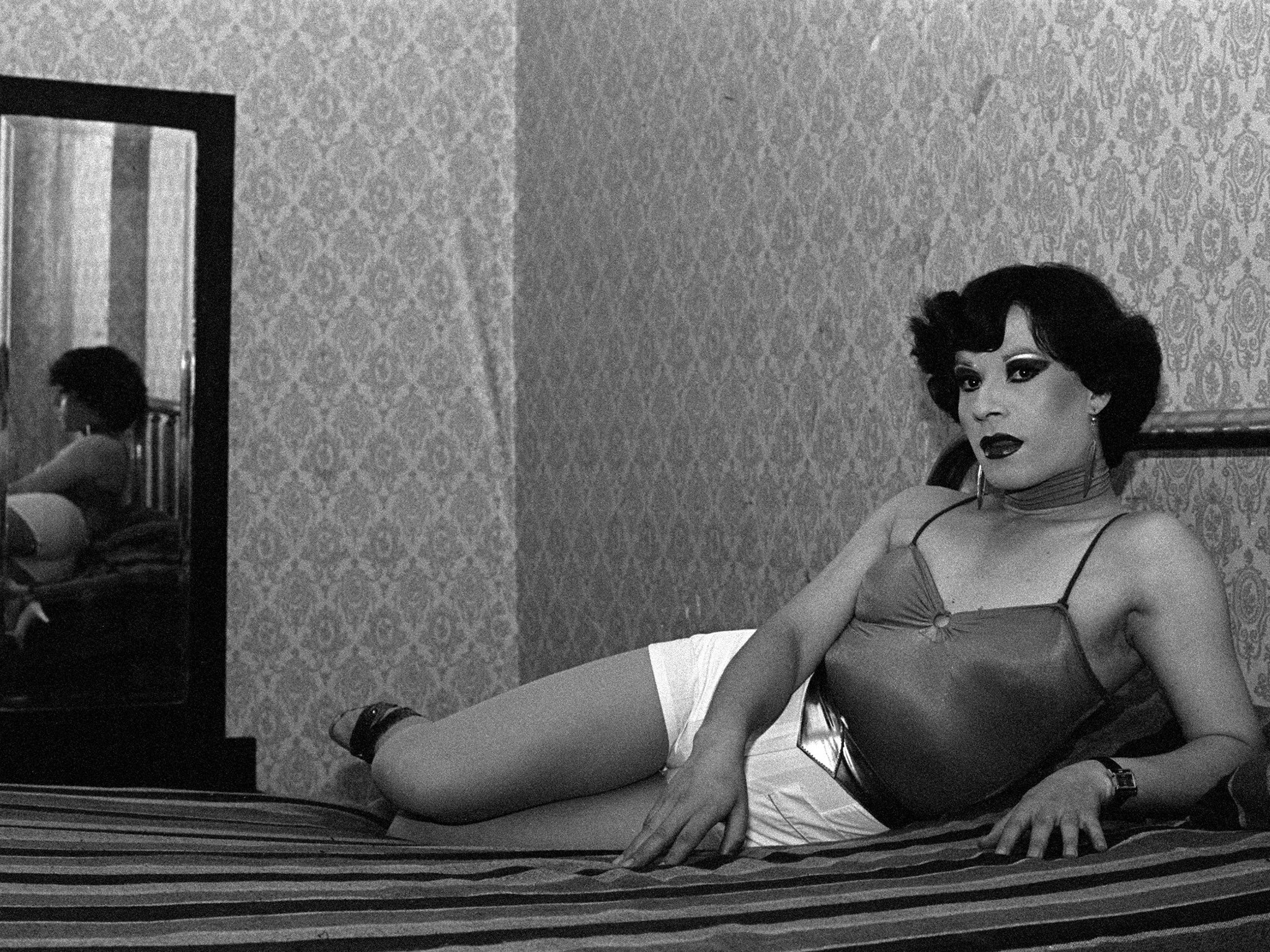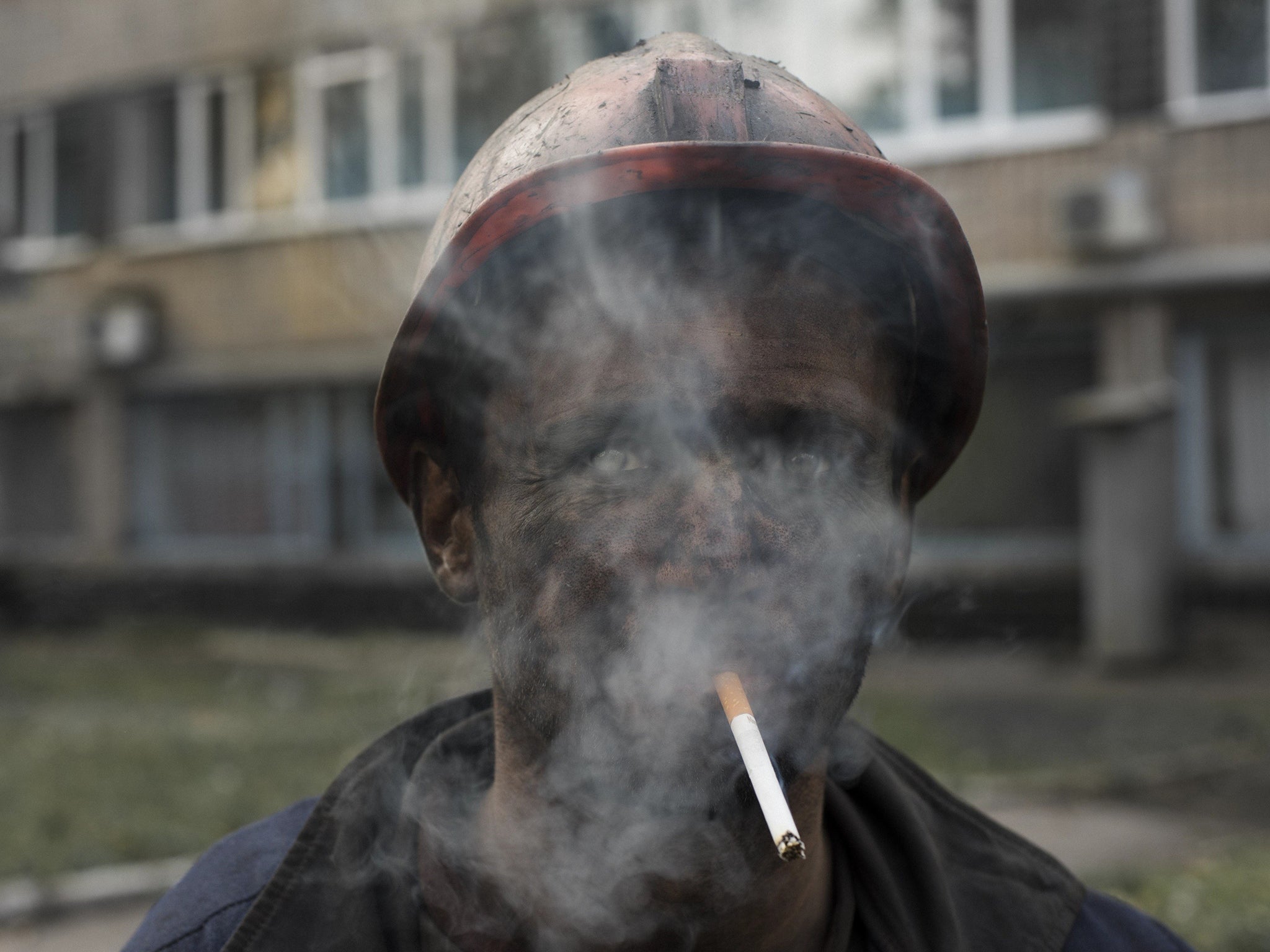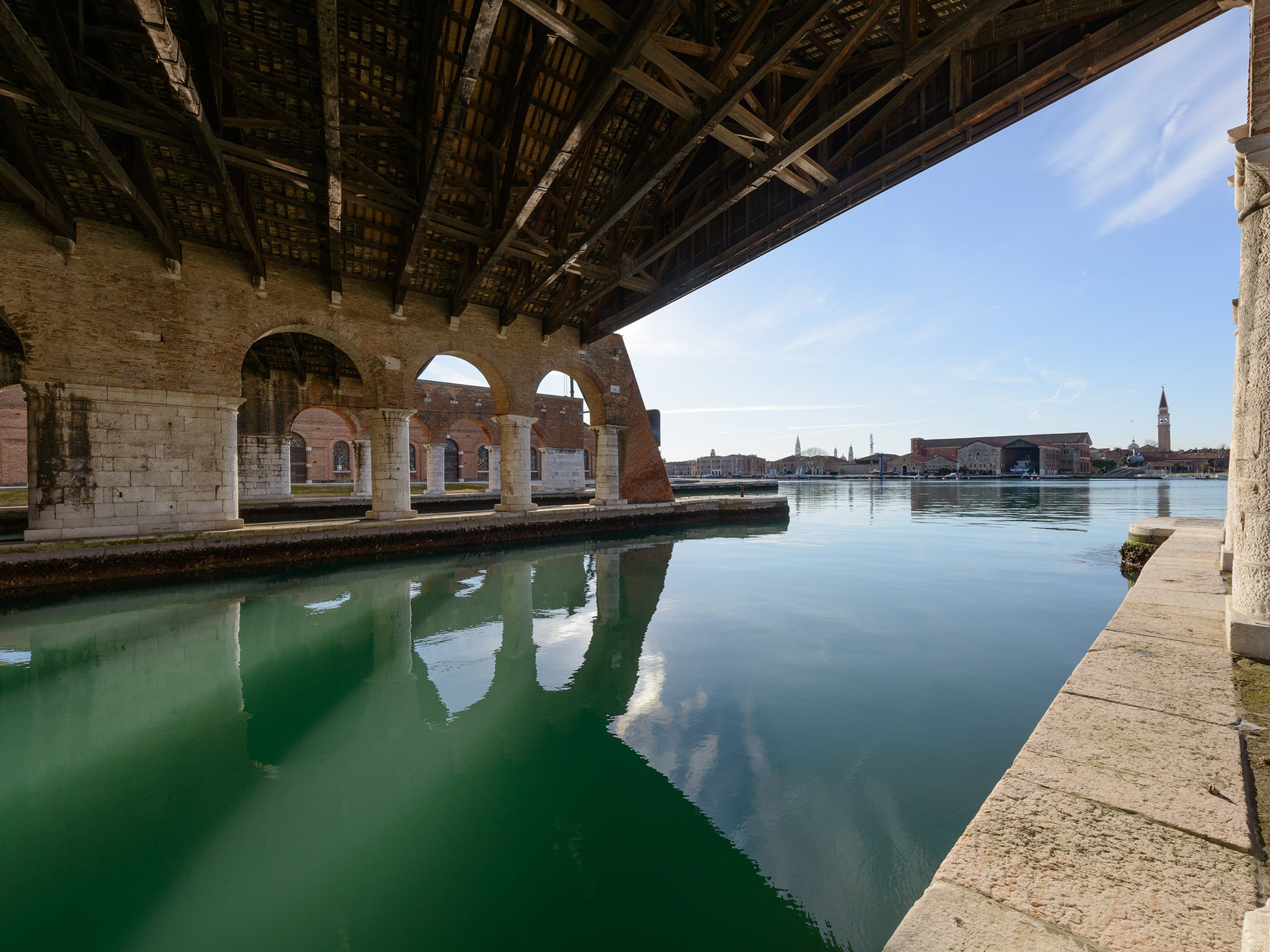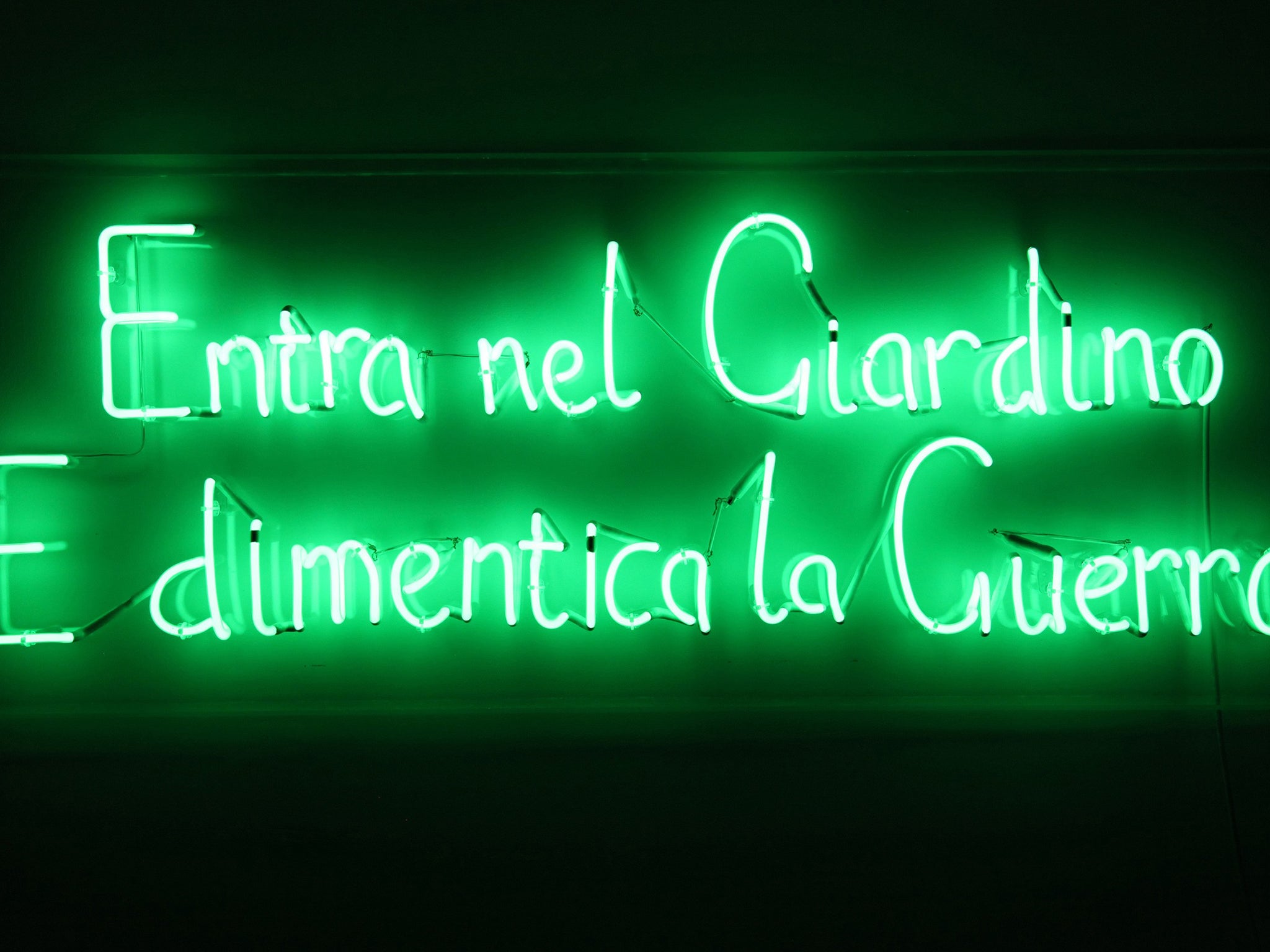Venice Biennale 2015: Why this year could be more political than the General Election
The strangest art jamboree on the planet is about to begin...

The venice biennale, which starts next week, is the world's most important visual-arts event. It is also the most illogical.
Trapped in a 19th-century time-warp, the grand national pavilions lining the Giardini, a set of gardens a few vaporetto stops from St Mark's Square, reflect a world view of more than a century ago.
The British pavilion stands at the apex of the gardens. Close by are other powers of the day like Belgium. America is on the edges. Such also-rans as India and China are banished to another part of town, as are nearly all the Latin-American countries. And, of course, when we say "British" pavilion, it is an odd definition of British. Scotland and Wales have their own artists and exhibitions (Graham Fagen and Helen Sear respectively) but outside the Giardini, while England's Sarah Lucas will be shown at the British Pavilion.
We don't yet know what former Brit-Art star Lucas, she of the self-portrait with fried eggs as breasts fame, will be giving us, but we do know that Scotland's Graham Fagen will warm the cockles of the SNP's hearts with a piece of cultural patriotism. Fagen's five-channel audio-visual installation, displayed across a "quartet" of TV monitors in a palazzo on the Grand Canal, will present an installation inspired by Robert Burns's "The Slave's Lament", the only work by the Scottish poet about the displaced and enslaved.
Ideas of mortality and temporality are explored in Helen Sear's newly commissioned video and photographic works, in which agricultural landscapes marked for production and consumption are seen to exist simultaneously as magical spaces. That said, Wales usually also makes a stir with its party, which last Biennale featured Gruff Rhys of the Super Furry Animals. This year promises live music, courtesy of 12-piece Afro-tropical-funk band Drymbago from Snowdonia.
Parties abound at Venice, but more importantly there has always been a political thrust to some of the work. In 1974 much of the Biennale was given over to the art of Chile in protest at the Pinochet regime, and this year there will be a look back at that as part of Chile's exhibit. In 1968 there were, inevitably, protests in that year of revolution. There is always nostalgic talk of that, just as there is seldom talk of the 1930s, when the Venice Biennale was directed from the office of Sgnr Mussolini.
Politics will certainly be to the fore next week, with artists from across the world already indicating that they will be embracing the most pressing and painful political issues of the day.
Neither India nor Pakistan may have a national pavilion, but this has not stopped artists Shilpa Gupta from Mumbai and Rashid Rana from Lahore collaborating on a joint exhibition that will present India and Pakistan united at the Biennale for the first time. Through a new series of site-specific installations, video, performance and print-based works, Gupta and Rana will explore ideas of territorial division and a people divided. The fact that these Indian and Pakistani artists are collaborating on a joint venture is probably as significant as the art that they produce.

Meanwhile, inside the 16th-century Church of San Gallo, New York-based conceptual artist Patricia Cronin has created a shrine in honour of women and girls facing violence and repression. She has gathered hundreds of clothes representing their suffering and arranged them on stone altars. The central altar will exhibit brightly coloured saris worn by girls in India, three of who were recently gang-raped, murdered and left to hang from trees.
Another altar displays hijabs representing the 276 schoolgirls kidnapped by Boko Haram in Nigeria, with an accompanying portrait depicting one of the victims. And the third altar presents a pile of aprons and uniforms symbolising those worn by girls at the Magdalene Asylums and Laundries, forced-labour institutions for young women without options in Europe and America as recently as 1996.
At the Chilean pavilion, Poetics of Dissent brings together two Chilean artists, Paz Errazuriz and Lotty Rosenfeld, with curator Nelly Richard. The three activists explore the country's passage from dictatorship to democracy as it has affected women.
It is no surprise that political events have strongly influenced Ukrainian artists, as the conflict in their country continues. Ukraine will be presenting a group exhibition entitled Hope!, featuring a young roster of the country's artists. Victor Pinchuk, the Ukrainian businessman who has played a big role in bringing the art to Venice, says: "The young generation of artists we have been supporting for many years started the future Ukraine already long ago – independent, uncompromising, critically reflective. Today they are new Ukraine's ambassadors."

One example is a group of young artists called Open Group. They look at young men drafted into the army, and their families waiting for their return. Outside the pavilion, the public sculpture by Nikita Kadan refers to the past and confronts the present war and Ukraine's Soviet past.
Even the Antarctic Pavilion wrestles with a recent event. Concordia, by the Russian artist Alexander Ponomarev, examines the Costa Concordia disaster, and specifically, the broken pact between Captain Schettino and his passengers, seeing it as a perspective on the fragility of the 1959 Antarctic Treaty.
Because it was 100 years ago, Turkey's genocide of the Armenians could scarcely be more topical as the centenary is marked and international argument continues, with the Pope using the word "genocide" and the Turkish government vehemently objecting. Turkish artist Sarkis, born in Turkey in 1938 and the son of an Armenian, says: "I needed to make a work to reflect its significance."
The work itself consists mainly of rainbows drawn in neon with the neons made from the glass of Murano. Sarkis says: "The colours are so pure and they will have the respiration of the light. They are breathing with my breath from the morning until the evening." Quite how that grapples with the genocide remains to be seen.
Mind you, there in a nutshell is a challenge of the Biennale. A promised political project may demand its fair share of analysis and imagination to extrapolate the political message.

Israeli artist Tsibi Geva will cover the Israeli pavilion with 1,000 black tyres, an installation that he says will raise concerns about "locality, immigration, existential anxiety and existence".
So many pavilions, so many artists, seem to promise apocalyptic art. Video artist and sculptor Fiona Hall, representing Australia, promises "a multisensory experience of sights and sounds". And it too will be political, with the curators pledging it will be "an immersive installation that confronts global political, financial, and environmental events and issues". Ms Hall has the better gift of the political gab though, saying the exhibition on will be "a minefield of madness, badness, and sadness in equal measure".
Artists, of course, like to make their presence felt, as Marc Quinn did in 2013 with his pregnant woman visible across Venice. For sheer cheek this year, or perhaps better to say initiative, Australia and indeed everyone will be trumped by New Zealand. Its artist, Simon Denny, is mounting an exhibition of photographs at Marco Polo airport, ensuring that his will be the first art that travellers to the Biennale will see.
And then there is the timing of the Biennale, a decision that has its own political consequences. For some reason, the powers that be in Venice have brought forward the 2015 shindig. By accident or design, it now clashes with the British General Election.
The art world, which normally tries to be as vocal as possible in the last stages of an election campaign, will instead be decamping en masse to Venice for art, parties and serious networking. From Tate director Sir Nicholas Serota downwards, the movers and shakers of the visual arts will be forsaking protest, lobbying and the polling booths.
Let's hope the often undisciplined art world remembered to register for its postal votes.
Join our commenting forum
Join thought-provoking conversations, follow other Independent readers and see their replies
Comments